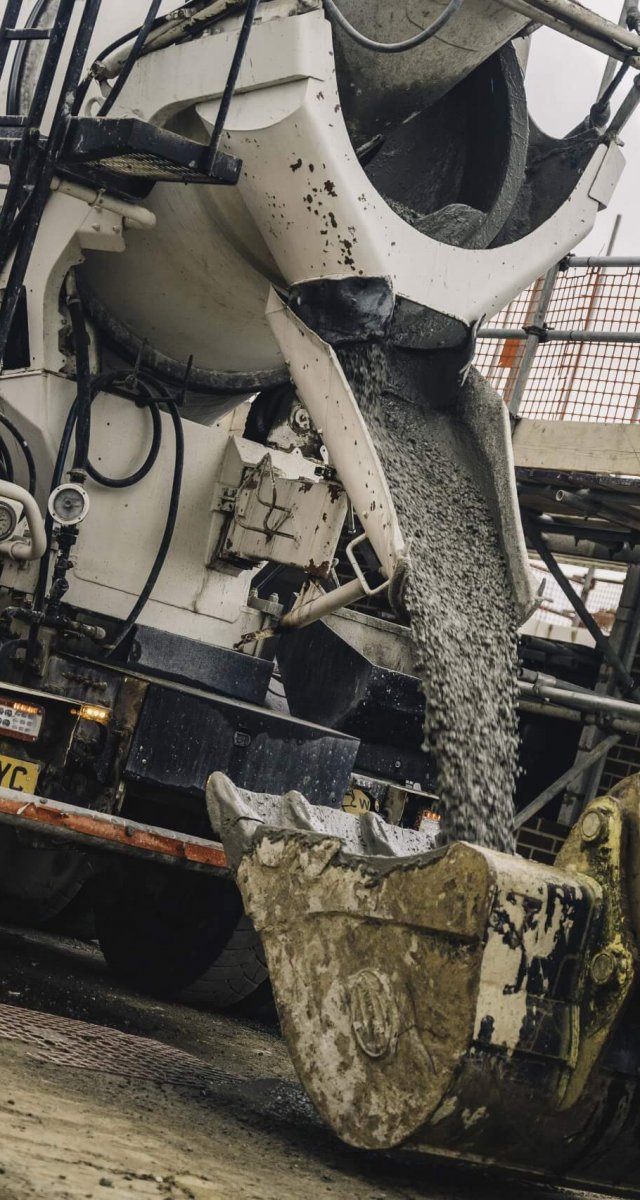How much concrete do I need?
Experienced builders and garden landscapers will generally know how much concrete is needed for those projects they carry out regularly, whether that’s laying a new driveway, creating a base for a garden shed or putting in fence posts.
However, if you’re still new to laying concrete – or even tackling it for the first time – you may not be sure just how much concrete you’re going to need for your particular project.
Naturally, you want to get it right: order too much and you’ll spend more than you need to (and saving money was probably one of the reasons you chose to do it yourself in the first place), not to mention deciding the problem of how to dispose of it afterwards; meanwhile, having too little to hand when the time comes to pour is likely to cause even greater problems.
The concrete calculator
One great way to work out how much concrete you’re going to need is to use a concrete calculator, like the one we have on this website. The concept is fairly simple – just multiply the length of the area you’re going to fill by its width and depth. That will give you a figure in cubic metres that represents the amount of concrete required.
For instance, if the area you need to fill is three metres long, two metres wide and one metre deep, you need 3 x 2 x 1 = 6 cubic metres. You can choose different units of measurement (e.g. inches) by using the drop-down menu, however the answer given will always be in cubic metres.
Often with concrete projects, the length and width are straightforward – the only problem is if it’s not a uniform shape. The best way to proceed in that case is to use the square or rectangle that your shape would most neatly fit into. You’ll probably end up with a little bit more concrete than you actually need, but it shouldn’t be by too much.
More complicated is the depth, because it’s not always obvious how deep your concrete needs to go and is likely to vary considerably depending on the nature of your project.
We mentioned three common concrete projects at the start of this article – let’s look at these in more depth (if you’ll pardon the pun…) to see how much concrete is likely to be needed for each.
How much concrete do I need for driveways?
Driveways need a strong base, because they need to support significant weight in the form of loaded cars or even heavier vehicles. The minimum recommended depth for driveway concrete is four inches (100mm).
For heavier vehicles or drives that are going to be seeing a lot of coming and going, you probably need to up this to five or six inches (125-150mm), or even eight inches (205mm) to ensure sufficient strength and durability.
A typical single driveway in the UK is about three metres wide by six metres long. Using the calculator, we multiply six metres by three metres by 100mm (the minimum depth).
So for this project, we would need 1.8 cubic metres of concrete.
How much concrete do I need for shed bases?
Shed bases are usually a nice even shape, so the length and width should be relatively straightforward. Remember, however, that the base needs to be bigger than the shed itself.
We’d recommend adding an extra four inches (100mm) to both the length and the depth.
As with a driveway, you should be looking at a minimum depth of four inches – after all, it’s not just the weight of the shed you need to bear in mind, but what you’re going to be keeping in it as well. That could add up to quite a lot of weight, so the base needs to be pretty tough.
So for an 8′ x 6′ shed, the amount of concrete you’ll be needing is 8’4″ x 6’4″ x 4″. That means 0.5 cubic metres of shed base concrete.
How much concrete do I need for fence posts?
The way concrete is laid for fence posts is different to our other examples, because it needs to be much deeper than it is long or wide if it is to securely hold the post in place.
About a third of the length of the fence post should be going into the ground, so for a 6′ panel, you’ll need a 2′ deep hole. Meanwhile, the length and width of the hole should be three times the length and width of the post, so for a 3″ x 3″ post the hole needs to be 9″ x 9″.
That means the hole will be 2′ x 9″ x 9″ = 0.03 cubic metres. To work out your total fence post concrete need, just multiply that figure by how many posts you need to put in.
Our concrete calculator is a great way of calculating the amount of concrete you need for a project, but if you’re still unsure, the Stewart Brothers Concrete team is here to help with expert advice when you need it.
We’re leading suppliers of high-quality ready-mix concrete to commercial and domestic customers in and around Ashford in Kent.
Get in touch with us now to find out more, get a quote for the concrete you need or place an order for fast delivery.

